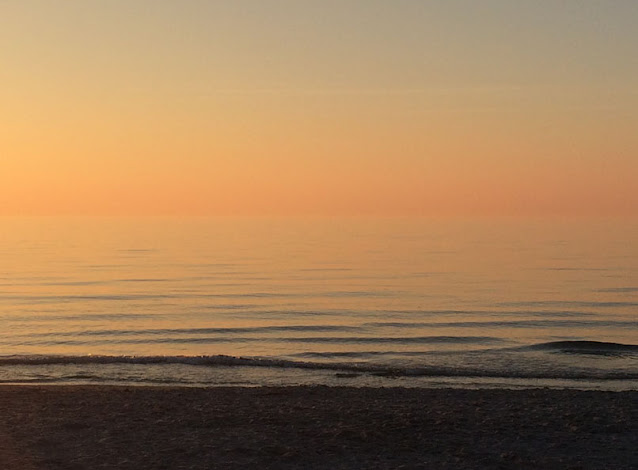It almost sounds like an old legend. The landscape artist Paul Müller-Kaempff (1861-1941) and a friend, the animal painter Oskar Frenzel (1855-1915), when walking along the high bank, unexpectedly discover the small fishing village of Ahrenshoop, which lies undisturbed in a fairy-tale slumber in a landscape of dunes. Müller-Kaempf says of this decisive moment in 1926: "We had no idea of its existence and looked in delight at this picture of peace and solitude. No one was to be seen; the roofs grey with age, the grey meadows and grey dunes gave the whole picture a character of the deepest seriousness and was completely unspoiled." (Mecklenburgische Monatshefte, 2 July, 1926, p. 333, quotation according to Negendanck 2011, p. 27).
This moment was preceded by a movement that had been going on since the middle of the nineteenth century, when many artists set off on a journey into this hinterland, a peninsula on the German Baltic Sea, to lead a free and natural life, which at that time was considered a modern idea. Artists' colonies were formed around the same time in other places, too, such as Worpswede, Murnau and Hiddensee.
After his discovery, Müller-Kaempff became one of the most important founders of the Ahrenshoop artists' colony, which this year is celebrating its 125th anniversary with many exhibitions and activities, and in which a great deal of emphasis is placed to this day on preservation and conservation. Here, works from different epochs are shown, starting with the founder generation through classical modernism to contemporary art.
I have visited this place a few times and I felt myself fall directly under the spell of the magic of nature, which constantly draws a new image of light, colours and shading. No one moment was like the next and I could only too easily feel what drew artists here. The long stretch of beach, the dunes and the landscape of coastal bays, the Darß Forest and the typical local reed-thatched houses, all in this ever-changing play of light, creates a very special energy which has me taking out the camera again and again instead of the paintbrush. In landscapes like this one can scarcely help becoming lyrical. I recalled Rainer Maria Rilke's words in the monograph of 1903 on the Worpswede artists (colony) and their landscape "The storms of spring are passing over the land. But sometimes they stop and there is a silence ... So much has not been painted, maybe everything. And the landscape lies as fresh as on the first day."
Now it must be mentioned that I always came here outside peak season. Often enough I looked at sunsets on an almost empty beach and at night heard nothing but the surf and a few occasional seagulls. I can hardly imagine how the place is transformed at the key seasons; typical local holiday homes are plentiful, for my taste unfortunately too many, and are all very much booked up, especially during the peak season in the summer months.
The open day at the Künstlerhaus Lukas, which was also founded at that time by Paul Müller-Kaempff as an artist’s house, and always takes place on the last Sunday of the month, should be interesting. The Künstlerhaus awards scholarships to Northern European artists of many disciplines, such as in the field of fine arts, literature, dance, composition and curation. What this place brings forth from contemporary artists is likely to be exciting and will be included in the plans for my next visit. Sometimes, in out-of-the-way places where art is practised, a feeling of something akin to dreamy and dusty nostalgia of the artistic creativity arises, especially when one is aware of the direct contrast with the innovation of the capital. However, promotions like the Lukas artist's house may put a different complexion on it and I am already looking forward to reporting about it.
The open day at the Künstlerhaus Lukas, which was also founded at that time by Paul Müller-Kaempff as an artist’s house, and always takes place on the last Sunday of the month, should be interesting. The Künstlerhaus awards scholarships to Northern European artists of many disciplines, such as in the field of fine arts, literature, dance, composition and curation. What this place brings forth from contemporary artists is likely to be exciting and will be included in the plans for my next visit. Sometimes, in out-of-the-way places where art is practised, a feeling of something akin to dreamy and dusty nostalgia of the artistic creativity arises, especially when one is aware of the direct contrast with the innovation of the capital. However, promotions like the Lukas artist's house may put a different complexion on it and I am already looking forward to reporting about it.
The heyday of many German artist colonies ended with the First World War. The political upheavals led to the creation of new forms of society. Also, the idea of the colonies of artists who wanted to combine life and work was now perceived as a glorified, romanticised utopia.
I think the fascination of a lifestyle close to nature with like-minded people is still present, though, or is not fully extinct, and is practised in a smaller way in many places (just as Ahrenshoop remained a place of refuge or retreat for artists throughout the historical epochs of the 20th century). I could also imagine a revival of this idea, since for many the economic logic of the capitalist abstract space and the increasing gentrification of the great cities present ever greater difficulties for life as an artist, which has been shown in the already increasing movement into the city suburbs.
Apart from this, it is quite simple: man springs from nature and will always return to it.














